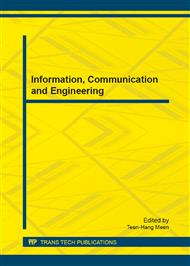p.507
p.512
p.518
p.527
p.533
p.539
p.544
p.550
p.556
Stress Redistributions Due to Creep Behavior and Seismic Response of Model Geosynthetic Reinforced Soil Retaining Structures
Abstract:
Geosynthetic reinforced soil retaining structures (GRSRS) become popular in the recent decades because of the advantages of easy construction, consuming waste soil in the construction site, supreme seismic resistance ability, etc. For the reason that clayey soils cover a wide area in Taiwan, clayey soils are often used as the backfilled materials for the GRSRS. Besides, during the 921 Chi-Chi Earthquake, a few GRSRS were destroyed. Consequently, the dynamic analysis of GRSRS turns out to be another significant research topic. In this paper, we investigate the creep behavior and the seismic response of model GRSRS by using finite element simulation. The predicted results indicated that the tensile stress of the reinforcement is increasing with time as well as under earthquakes. The tendency of the incremental tensile forces due to the clayey backfill soil creep behavior is significant in the initial stage but slows down with time goes on. Observing the predicted results of the GRSRS under different earthquake scales, it is found that the acceleration variations and the tensile force distribution of the reinforcement layers can not be evaluated with a simple factor.
Info:
Periodical:
Pages:
550-555
Citation:
Online since:
February 2013
Authors:
Keywords:
Price:
Сopyright:
© 2013 Trans Tech Publications Ltd. All Rights Reserved
Share:
Citation:


